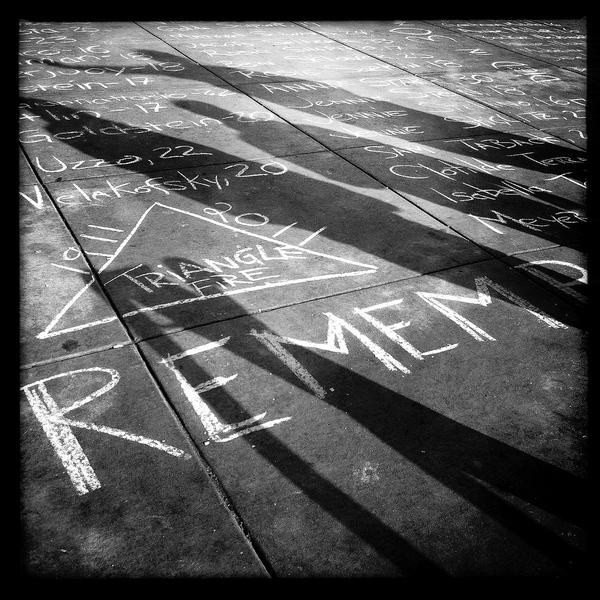Today’s post comes from guest author Jay Causey from Causey Law Firm in Seattle. He points out that the media should do more to talk about the actual cost of goods for consumers by investigating and reporting on the huge safety lapses that occur in many outsourced factories, including the recent tragic fires in Bangladesh. Because the people who are risking their lives by working in substandard conditions are human, too. By focusing on how worker deaths affect businesses and the consumer’s bottom line, media outlets are missing the chance for consumers to understand the real price that other humans pay for United States goods, sometimes with their lives. And that is indeed, not humane, because I expect and hope for more from the media.
On March 25, 1911 a fire broke out at the Triangle Shirtwaist factory in New York City. In 18 minutes 146 garment workers, mostly young women, were dead. The hideous circumstances of the tragedy – widely depicted by the media with front-page pictures of the corpses of women who had jumped from the building windows to avoid being burned to death – incited a wave of public revulsion that contributed to New York’s enactment of one of the nation’s first workers’ compensation statutes. This occurred in the so-called “Progressive” era of American political history – now largely a distant memory – when within the next decade the majority of states followed suit.
One hundred years later, similar tragedies in the world-wide garment industry, which feeds U.S. corporations like WalMart, H&M, and Gap, occur with scant media attention other than the possible effect of such disasters on corporate business operations. In November of 2012, 112 garment workers died in a fire at a Bangladeshi factory producing WalMart clothing. (A manager had reportedly closed an exit gate after the fire alarm sounded, telling workers nothing was wrong and to just keep working.) In another Bangladeshi factory on January 26, 2013, a fire killed seven garment workers who could not escape due to a blocked exit.
Rather than expressing outrage over these circumstances, U.S. media, including the New York Times, characterized these incidents not as human tragedies, inexcusably occurring in the 21st century industrial world, but as “blows to the Bangladeshi garment industry.” The fact is that with the globalization of that industry, these Bangladeshi workers are essentially “our” workers, making the clothes Americans wear, sold to us by U.S. corporate behemoths competing to do this at the lowest price possible they think will be acceptable to the American consumer. The media is complicit in disconnecting these tragedies from our consciousness as intolerable – just as was the sense of our citizenry after Triangle – by focusing it’s reporting on the economic impact to the garment business and blandly parroting the boilerplate disclaimers of responsibility given them by the industry.
The garment corporations could easily afford to ensure their foreign contractors increase workers’ wages and institute workers’ safety measures with a minimal impact on the final price and their bottom line.
These incidents are almost never reported in a way that puts the question to the American consumer as to whether we’d pay a bit more per unit of clothing to ensure the safety of these workers rather than participate in the race to the lowest possible price. Labor cost as a component of garment retail price is miniscule – one to two percent. The garment corporations could easily afford to ensure their foreign contractors increase workers’ wages and institute workers’ safety measures with a minimal impact on the final price and their bottom line.
As it turns out, however, when plans were being developed in 2011 to improve fire safety at Bangladeshi factories, those efforts were quashed by WalMart and Gap, who determined that preventing worker deaths from fire would cost too much: “It is not financially feasible for the brands to make such investment.”
Don’t expect to hear much more about all this from the corporate media.
Source: www.fair.org
Photo credit: Photo credit: Madison Guy / Foter.com / CC BY-NC-SA


